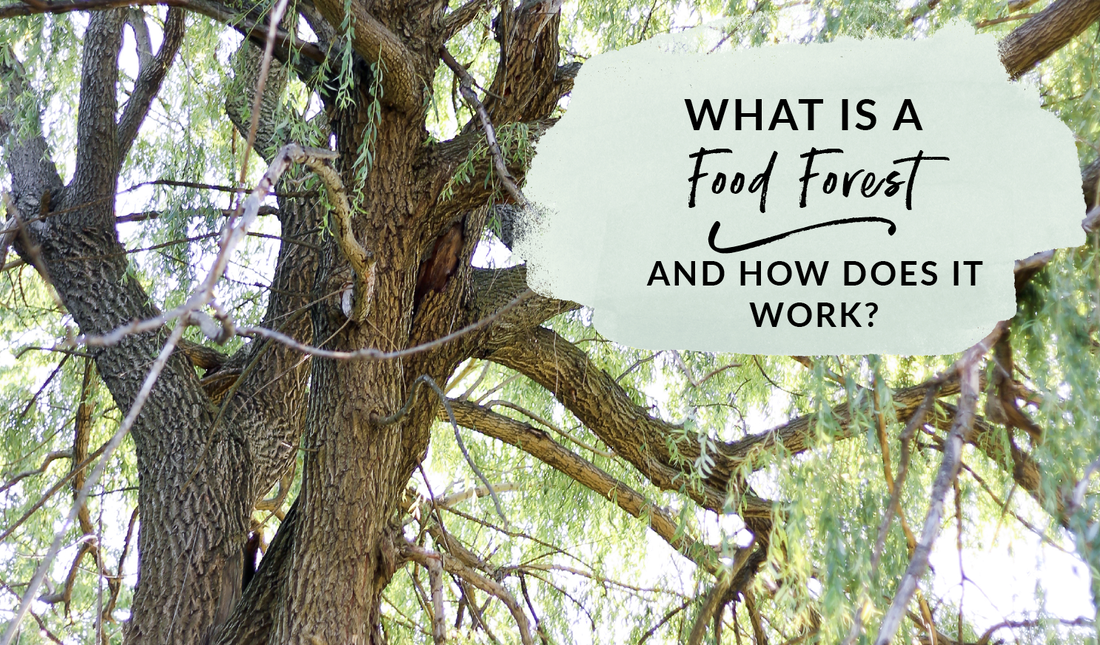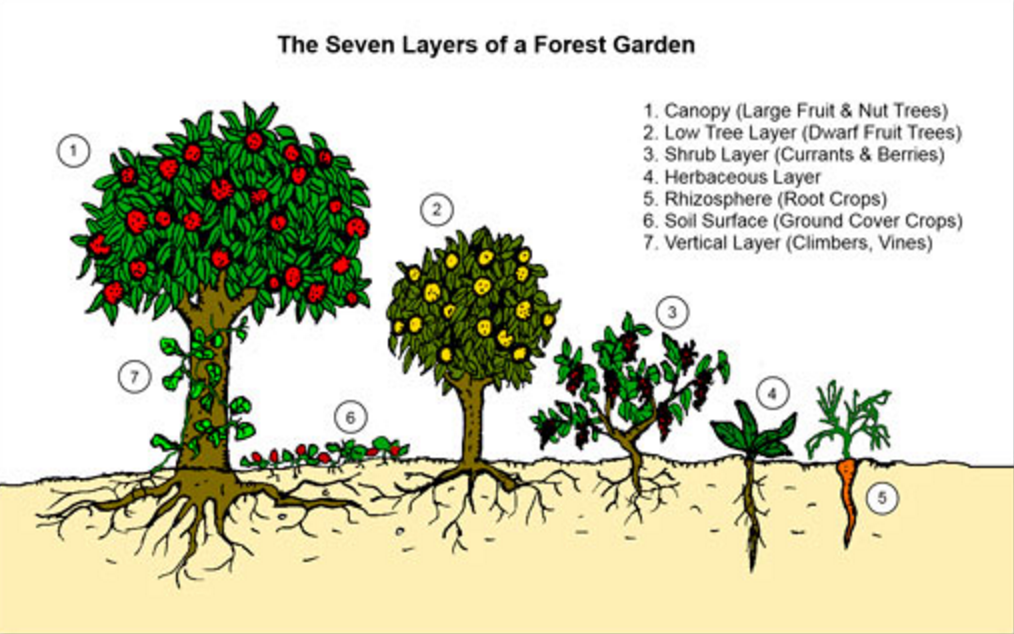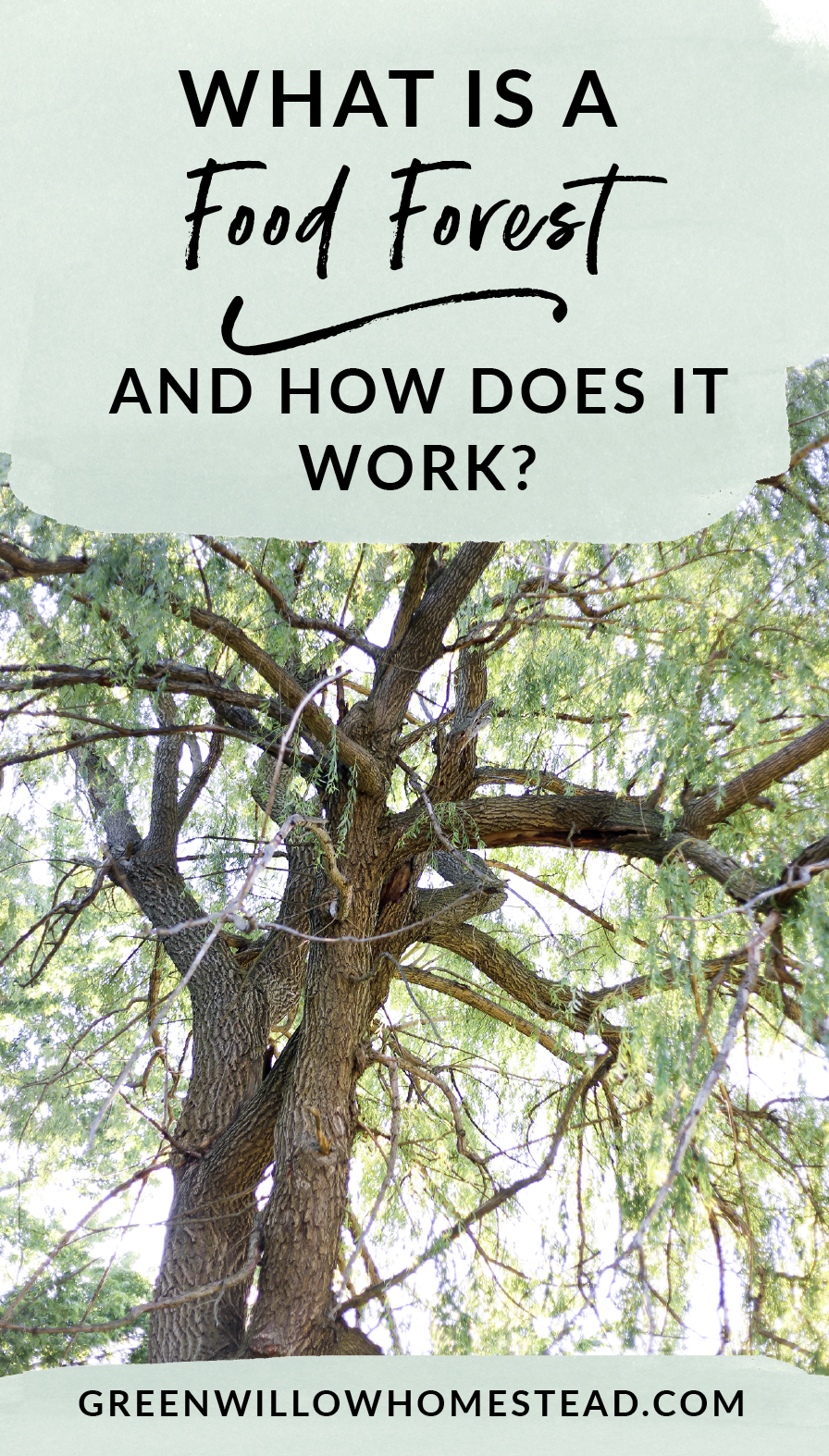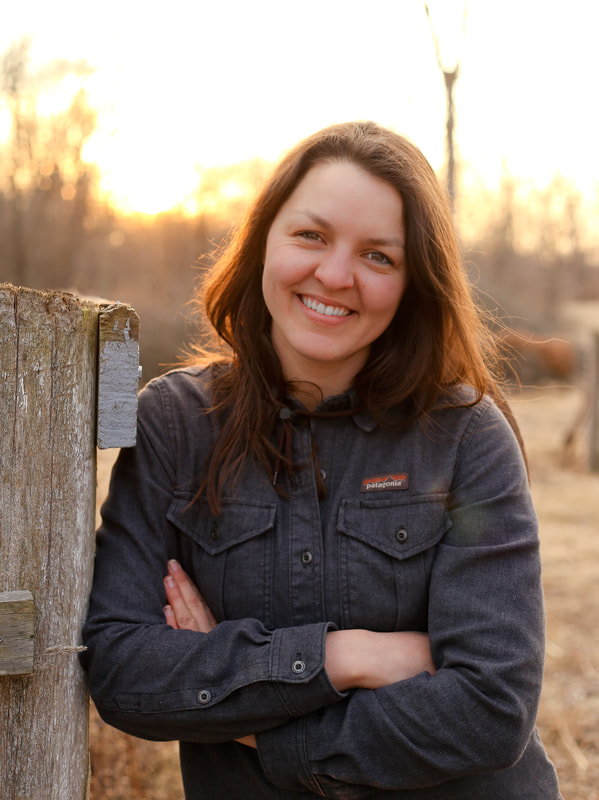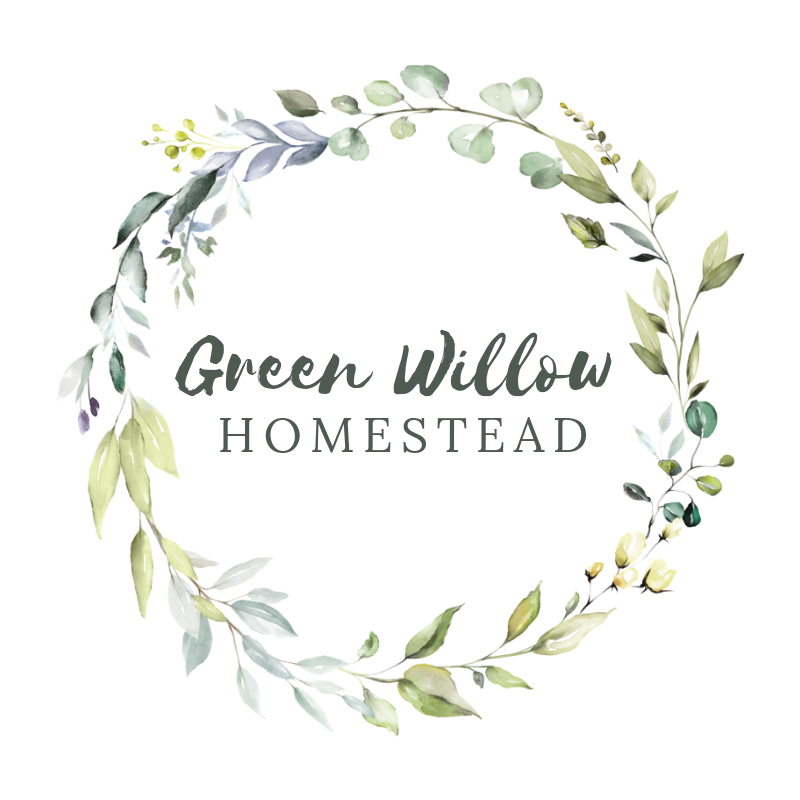|
One of my favorite aspects of permaculture is food forests. What is a food forest? Imagine walking through acres of beautiful apple trees, surrounded by fruiting mulberries, ripe tomatoes, creeping clusters of mint and wild strawberries, as you walk you can pick and eat whatever your heart desires. All the plants benefit each other in a closed loop system that draws pollinators, adds minerals to the soil, fertilizes itself naturally, and mulches itself naturally. Food forest gardening and farming is a low maintenance sustainable plant-based food production system, inspired wholly by the way woodland ecosystems work without human interference.
In a woodland ecosystem, there are multiple layers that contribute to its overall health and longevity. When planting a food forest we work to replicate these layers, creating a polyculture that requires minimal human interference to produce and survive.
What is a polyculture? What helped me best understand this term was understanding its antithesis, a monoculture. All of those rows of corn for miles and miles? That is a monoculture. One plant growing in abundance invites disease, nutrient deficiencies in the soil, and soil erosion. With a polyculture that has many different varieties of plants growing together, it nurtures and builds the soil by fixing nitrogen, drawing pollinators, and pulling up much needed minerals. Let's take a look at the seven different layers of a food forest. The Seven Food Forest Layers
Artwork by Graham Burnett from his book “Permaculture A Beginners Guide” – www.spiralseed.co.uk)
The goal with a food forest is to plant as many native perennials as you can. By doing so, you decrease the amount of work you have to do and increase the output of edible produce. Planting a cultivar in the climate, soil conditions, and correct amount of sun is a sure-fire way to a lasting crop yield. Your soil and plants will thank you for it!
Our Wisconsin Food Forest Plan
For the Canopy Layer, we have a few different trees we will be using based on the texture and drainage of our soil. For this first year, our chosen Canopy Layer species include black cherry, silver maple, hardy almond, black walnut, and oak. Some of them are already established, which saves us money!
For the Low Tree Layer, we will have apples, cherries, figs, and pawpaws. For the Shrub Layer, we are working with the existing wild raspberries bushes. For the Herbaceous Layer, we are planting a wildflower mix of Calendula, Cornflower, Red Flax, Poppy, Black Eyed Susans, Spring Beauty, Lupine, and Lead Plant. These flowers will do their part to draw pollinators and fix nitrogen into the soil. For the Root Layer, we are planting Culver's Root and Prairie Dock. Eventually, we will let dandelion do its thing and possibly some carrots and parsnips. For the Ground Cover Layer, we are planting wild strawberries, tons of them. We also will be adding winecap mushroom spores to our mulch. We don't foresee on having a vine layer for a while, but when we do I'll think about grapes or beans. There is an amazing tree sale at Camp Tapawingo that happens every spring. This is where we are getting all of our Canopy Layer. Wehr Nature Center has a great native plant sale that we are getting nearly all of the remaining plants from. The rest will be bought as organic seeds that I'll sow after the last frost date. Additional Resources:
So that concludes our Wisconsin Food Forest Plan! It definitely is a baby step, but it a step in the right direction nonetheless. Do you have any plants you would to add to the list when it comes to building a food forest in the Midwest or Wisconsin? Leave a comment below!
3 Comments
1/26/2021 08:27:02 am
It's amazing that you can make a natural ecosystem that produces food. I want to try something like that, so I'm going to need to get some trees planted. I can handle planting the smaller things, but it might be best for me to get a professional to plant the bigger trees to ensure that they are healthy.
Reply
1/4/2022 01:04:31 pm
We are working on a permaculture farm in zone 7b DFW Texas. Thank you for sharing your methods :)
Reply
Leave a Reply. |
Meet Kelsey,Thanks for stopping by Green Willow Homestead! From chicken rearing to composting, we've got our hands full and we love sharing what we've learned along the way. Follow along as we turn the 80 acres we call home into a farm that serves its community and a homestead that nourishes us throughout the seasons. Grab the EbookListen in!FREE Guide!Tune in to our YouTube ChannelInspirationsCategories
All
Favorite Books of 20241. Erosion
2. Braiding Sweetgrass 3. As Long As Grass Grows 4. The Small Scale Poultry Flock 5. The Zero Waste Solution Archives
April 2024
|
FOLLOW KELSEY ON INSTAGRAM!
As an Amazon Associate I earn from qualifying purchases. |

